About Agua Amarga
Agua Amarga is a small and charming coastal town in Almeria, it has a set of white houses in the hills of the Natural Park. Previously, the main source of income of Agua Amarga and its neighboring villages was fishing, but today, thanks to its natural beauty, its main industry is tourism now. All its streets are beautifully decorated in an Andalusian way, as you will see geraniums and bougainvilleas hanging from balconies and terraces of the houses. The unique shops of the town give it a modern bohemian look. This Agua Amarga travel guide will simply include everything you need to know about this city.
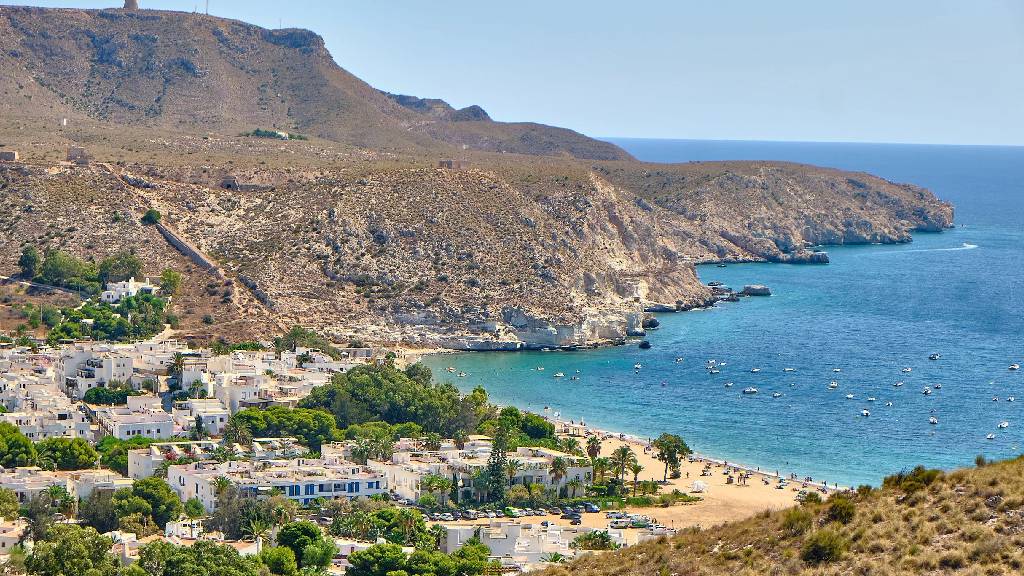
It is a great tourist destination for people who do not like to move much, as it is a small town where you can find everything, such as bars, restaurants and hotels close to each other, in one place. There are small hills with pristine white houses shining in the sun around Agua Amarga. And one must go to the Mesa Roldán (a volcano with a lighthouse on top) to appreciate the heavenly view not only of the village, but also of the beach and its coast.
If you are a fan of the show ’Games of thrones’, then you should visit Agua Amarga since the fort of Mesa Roldán was one of the filming locations of the sixth season that aired in 2016. The film ‘Sexy Beast’ was also filmed here.
Population
Agua Amarga is a very small town and according to the 2020 Census of the National Institute of Statistics of Spain it has a population of only 413 registered inhabitants. It has an area of 0.3913 km² and a population density of 1,055 km².
From 2010 to 2020 its annual population change rate has been 0.80%. 54% of the village population are men and they also have a very high literacy rate of 99.4%.
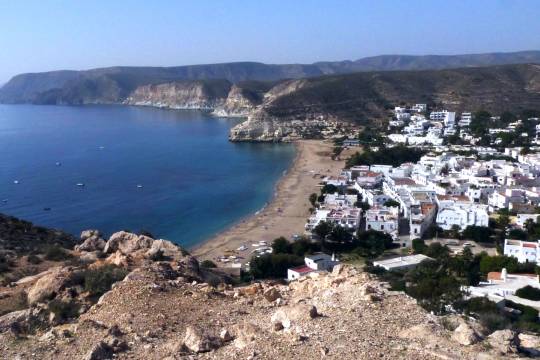
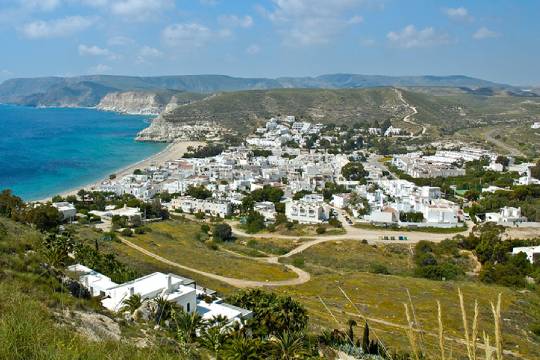
Geography
Located in the municipality of Níjar, in the province of Almería, Agua Amarga is one of the most populated coastal areas. It is frequently visited by tourists which results in the beaches being very crowded, especially during the tourist season.
It is located in the northeastern part of the metropolitan region of Almeria and 30 km south of Vallenar. The whole village is surrounded by the Cabo de Gata-Níjar Natural Park. It is close to the towns of Carboneras, El Llano de Don Antonio, El Argamasón and Fernán Pérez. At the eastern end of the remains of an old pier where there are still ships loaded with iron ore from the mines of Lucainena towers.
History
Read this Agua Amarga travel guide carefully and know the detailed history of this city. The village was discovered back in 1811. Its silver deposit served financially during the Chilean War of Independence. In the past, its main source of income was fishing, although this is not the case now, but the town still continues its tradition of fishing.
Its name is derived from the Arabic word ‘Al-hawan’, which means ‘location of water’ and if its name is literally to English, it means “bitter water”. The reason can be that the taste of seawater is bitter, and that is probably due to the small iron particles from the mine present in the water.
According to research done by Ignacy Domeyko in 1822, there were 150 active mines in the village at that time. Calera, Colorada and Aris are referred to as the most productive mines in Agua Amarga.
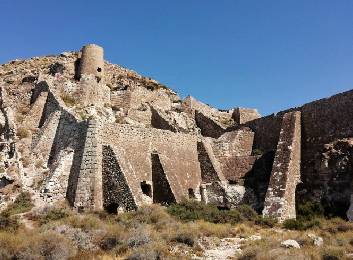
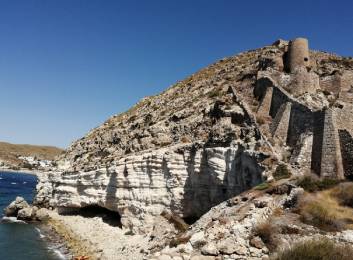
Religion
More than 97% of the citizens of Agua Amarga follow Roman Catholicism, while only 1% are Protestant and about 1% do not follow any religion.
Culture
The culture in Agua Amarga is a diversified fusion of various things, such as crafts, festivals, gastronomy, agriculture and fishing. All these industries mentioned, together with a good tourism trade, keeps the population employed and helps to boost the economy of the region.
The local people are very proud of their art and skills, which is also highly appreciated by the tourists and foreigners. Surprisingly, the vibrant culture of this city has influenced other parts of the world as well so much that artists and artisans from different parts of the world have come here to live and work.
Language
The official language of Agua Amarga is Spanish, but it does not mean that a person who does not speak Spanish cannot enjoy the city. You will find some people who speak English and will also be a bit adventurous. However, you can use technology like Google Translator, or any other translation app to talk to the local people.
For a better experience, you can learn the basics of the language such as greetings and goodbyes, which is highly appreciated by locals. The townspeople are also very helpful and always willing to help those in need.
Currency
The official currency of Agua Amarga is ‘Euro’ (€).

Government
Agua Amarga, Almería is one of the eight constituencies that are represented in the Parliament of Andalusia, the autonomous legislature of the Autonomous Community of Andalusia. The constituency elects 12 deputies. Its boundaries correspond to those of the Spanish province of Almería.
Climate
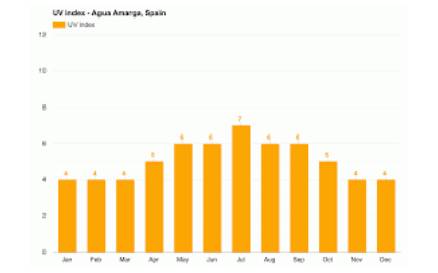
The average temperature in Agua Amarga in May ranges from 73°F (23°C) – 60°F (16°C). It is slightly cool with a gentle breeze.
In the warmest month of August, the temperature varies from 85°F (30°C) – 74°F (23°C). And in the coldest month, February has a temperature of 61°F (16°C) – 49°F (9°C).
When to Go Agua Amarga
The months of May and October are the most preferred months to spend holidays in Agua Amarga. In this season, the temperature is usually around 23°C and an average of 365.2857 hours of sunshine in a month. Therefore, the weather is pleasant and tourists easily enjoy their precious time.
The coldest months of Agua Amarga are January and February with the temperature around 9°C.
Travel
If you visit Spain from a foreign country for tourism, business, family visits, medical treatment, studies, internships or voluntary activities with a duration of not more than 3 months, you must meet the entry conditions set in the Schengen Borders Code.
NOTE: Due to the pandemic, there are certain health requirements that also need to be met.
All foreigners must present one of the following documents to enter Spain:
- Vaccination proof
- Negative COVID test
- Test of recovery from COVID
Minors under the age of 12 years do not need to submit documentation related to the COVID to enter Spain.
The identification and documentation requirements to visit Spain are:
- Valid passport or travel document: The document must be valid up to three months after the date of departure from the Schengen territory.
- Visa: A valid visa is required for citizens of certain nations. And it is not necessary if the person has a valid residence permit or a valid long-stay visa issued by a Schengen State.
You can consult the list of nationalities that require a visa here
https://eur-lex.europa.eu
- Documents attesting to the purpose and conditions of your stay. This information must be evidenced by documentary evidence or other means.
- Return ticket in all cases.
- For professional travel, the invitation to demonstrate the existence of a relationship associated with the professional activity.
- For private visits or tourism, confirmed booking of an organized trip, or proof of accommodation.
- For study trips, internships, volunteer work, etc (with a duration of less than three months), proof of admission to an educational center or internship contract or proof of admission to a volunteer program.
- For travel for other reasons- an invitation, reservation, entry card or receipt.
Citizens of the European Union, Iceland, Liechtenstein, Norway and Switzerland, and their families
Citizens of these states may enter Spain with their national identity card or with a valid passport.
And the relatives of the citizens of the mentioned states can enter with a valid passport. Depending on their nationality, they may need an entry visa.
Before traveling to Spain, you should know the necessary information about the mandatory security checks to avoid delays at the airport. For more information on the general security and customs rules for travel to Spain, you can consult its customs website and recognize the number of items you carry.
The prohibited items according to the Spanish government are:
- Acid
- Pool cues
- Construction tools, including hammars, nails and screwdrivers
- Catapults and slingshots
- Darts
- Any type of explosives
- Mercury
- Chlorine
- Poisons
- Fire extinguisher
- Pepper spray
- Tear gas
- Bacteria
- Virus
- Contaminated blood
- Pistols
- Rifles
- Toy or replica weapons
- Radioactive material
- Revolvers
- Razor
- Paint
- Umbrella
- Sports bats
- Knives
- Scissors
- Batteries
- Compressed gas cylinders
- Liquid nitrogen
- Firearm
- Bleaching powder
The nearest airport of Agua Amarga is Almeria Airport (LEI). It is the main airport of Almeria that connects the city with all major destinations. It is the closest airport to Agua Amarga, and serves about 990,000 passengers a year.
The airport has many facilities such as a café, restaurant, terrace and you can also find hotels, buses and taxis near the airport. Even if you have not booked a taxi in advance, there are many taxis available near the airport.
Almeria Airport (LEI)
- Address: Carretera Nijar – Alquián, 04130 Almería, Spain
- Contact: +34 913 21 10 00, 902 404 704.
Emergency & Medical Assistance
In case of fire or any medical emergency, call +34 913 21 10 00 to get help from the airport. For medical emergencies professionals are available 24/7.
The most popular airlines that fly to/from Almeria Airport (LEI) are EasyJet, Ryanair, Transavia, Vueling, TUI fly Belgium, Smartwings, Luxair and many more.
- Taxis
The best way to reach or explore the village will be taxis. As the drivers are usually the local people, they know the city the best, like where to go, what is the best time, hidden gems, shortcuts and much more. And even if you visit during the high season, the driver knows tricks to avoid traffic jams. - Bus
ALSA, Autocares Rodríguez, Consorcio de Transporte Metropolitano, El Ejido, Autocares Baraza, etc are some companies that provide bus services, but Surbus is a well-known and most famous bus agency. Their contact number is (+34) 950 624 735
But, it is advisable for tourists who do not know the routes of the buses correctly that they should not choose buses as a mode of transport. Because, if you take the wrong bus, you can waste your precious time. - Train
If you come from any other city in Spain like Barcelona, Madrid, Seville, Granada, Valencia etc. then apart from the above mentioned options of a bus, taxi or flight, you can also travel by train. Although it is not the fastest mode of transport, it is definitely better than buses and taxis. Train agencies such as Renfe and Surbus allow you to visit the most iconic places of the city, its corners and monuments. - Cycle
If you are a fitness fanatic or if you just want to enjoy the nature of the village in a different and unique way, book a cycle and explore the beautiful village of Agua Amarga. You will have no restrictions or fear of traffic.
But traveling every day in a cycle can be a little difficult, so you should leave at least a day or two to experience the joy of cycling in a new land.
If you are not going too far, walking is also a good option, in this way you can know the historic centers of Agua Amarga. However, the modes of transportation mentioned above will allow you to easily move around the city.
Accomodation
There is a wide variety of hotels in Agua Amarga, you can choose according to your budget and comfort. To help you, we have done our research and prepared a list of some of the best and most famous hotels in the region.
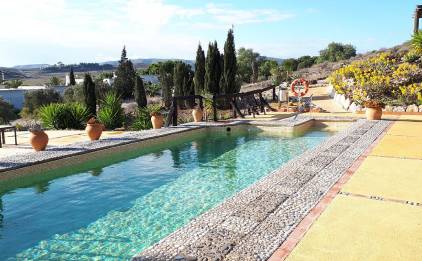
Hotel The Originals Cortijo Los Malenos
Direction: Paraje la Joya, 04149, Agua Amarga, España
Contact No: +34 618 28 62 60
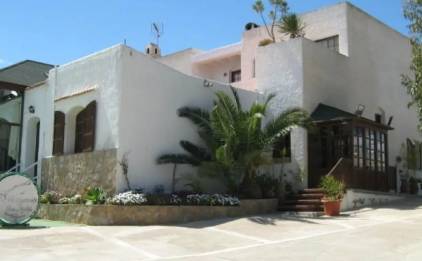
Family Agua Amarga
Direction: Calle Lomilla N 6, 04149 Agua Amarga, España
Contact No: +34 950 13 80 14
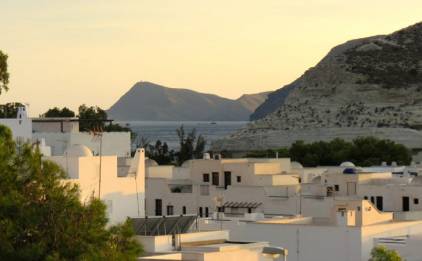
Hotel Senderos
Direction: Calle Pueblecico 1, 04149 Agua Amarga, España
Contact No: +34 950 13 80 87
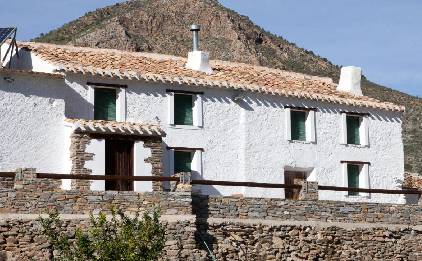
Cortijo El Paraiso
Direction: Diseminado los Escullos Km 6 Parque Natural del Cabo de Gata, 04118 Los Escullos España
Contact No: +34 680 99 47 79
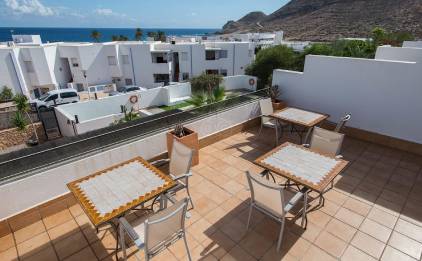
Hotel Arrecife Calachica Las Negras
Direction: C. Hélice, 1, 04116 Las Negras, Almería, España
Contact No: +34 950 80 40 94
Services
When in Spain, call 112 in case of any emergency.
There are three emergency services in Spain: the police, the fire department, and the ambulance. You can contact emergency services in Spain by calling the pan-European emergency number (112) from any telephone.
Consultorio Agua Amarga
- Address: C. Ferrocarril Minero, 04149, Agua Amarga, Almería, Spain
- Contact No: 950 15 33 01
- Health: 955 54 50 60
- Emergency: 950 17 53 06
Citizens of Eastern European countries and Switzerland can obtain free health care and other basic services in Spain, but citizens of non-European countries are advised to obtain insurance before leaving their home country to enjoy their holiday with peace of mind and without stress.
Travel insurance offers extensive protection and covers medical expenses. Travel insurance is essential for unexpected losses such as lost flights, lost luggage, stolen money, lost passport, etc.
Other emergency services are also available at the following numbers:
- Ambulance: 061
- Fire brigade: 080
- National Police: 091
- Local police: 092
Vithas Hospital Almería
- Address: Carr. el Mami a Viator, Km.1, 04120, Almeria, Spain
- Contact No: +34 950 21 71 00
Hospital for High Resolution The Toyo
- Address: Cam. de la Botica, s/n, 04131, Almeria, Spain
- Contact No: +34 950 15 80 15
Etiquette
- Dress Code
As part of the Agua Amarga travel guide, dressing properly is very important. There are no restrictions on the type of clothing one can wear or not. You can dress the way you want, but to be more comfortable it is better to dress according to the weather in which you are traveling. Because no one wants to ruin his trip due to discomfort caused by clothes.If you’re traveling in the hot months, it’s best to wear something loose and airy. For women, it’s the best time to put on dresses. T-shirts, shorts, jerseys and slippers are the most suitable for this type of weather.
Or if you visit when it is very cold, you can wear various layers of clothes. Coats, jackets, sweaters, boots will be very comfortable. - Drinking
In Spain, children under the age of 18 cannot not buy alcohol, such as beer, wine and spirits. There are also very strict rules against driving under the influence of alcohol. The legal limit of the blood alcohol content in Spain is 0.5 grams per liter of blood. In addition, it is also forbidden to walk on the roads or in the metro with glasses, cans and bottles containing alcohol. - Tipping
Tipping is not a very common practice in Spain and generally most Spaniards do not tip at a restaurant, cafe, club etc. Though the tipping culture does exist, it is not very necessary. It is only common in big cities such as Barcelona, Madrid and Seville, where most employees in the hospitality sector earn a good amount of money through tips. - Photography
When you check out this Agua Amarga travel guide, you should know about the trend of photography in the city. In Spain, no one can be photographed without their consent or permission. You can take photos of people you know or even buildings, monuments, beaches, etc, unless it is specifically mentioned that you cannot click the pictures.
Neighborhood
Sevilla
Seville is located on the Guadalquivir River and is the fourth largest city in Spain. It is a monumental city with colorful traditions, historical architecture and endless tapas. It offers many attractions such as the Isla Mágica, Plaza de España, Real Alcázar de Sevilla, the Cathedral of Seville with the Torre de la Giralda and the Torre del Oro on the river.Malaga
Malaga is the second most populous city in Andalusia and is located on the shores of the Mediterranean. It is also the sixth most populous city in Spain. It is the place where Pablo Picasso was born. The city has more than sixteen beaches, a very fascinating cultural side and museums for all tastes. There are many tourist attractions such as Picasso Museum of Malaga, Carmen Thyssen Museum Malaga, Malagueta Beach.Granada
Granada is undoubtedly one of the most beautiful cities in Spain. It is a city in the south of Spain in the foothills of the Sierra Nevada. It is famous for having great examples of medieval architecture from the Moorish period, especially the Alhambra, an extensive fortress complex on the top of a hill that encompasses royal palaces. Some famous places to visit there are Granada Cathedral, Calle Caldereria Nueva, Sierra Nevada, Albaicín, Mirador de San Nicolás, Carrera del Darro.Cordoba
Cordoba is a Roman city and an important Islamic center of the Middle Ages, in the 2,000 years of history during the 10th century, it had grown to become the largest city in Europe. The city prided itself on intercultural harmony and coexistence among Jews, Muslims and Quirtans. Some famous places you can visit are Mosque-Cathedral of Cordoba, Alcazar of the Christian Kings, Roman Bridge of Cordoba, Viana Palace, Historic Center of Cordoba, etc.Cadiz
Cadiz is the oldest city in Spain with more than 3000 years of history. It is a city with different cultures, amazing history, beautiful beaches, magnificent architecture, tasty food and of course wonderful people.
Some of the must-see places in Cadiz are La Caleta Beach, Castillo Sta Catalina, Barrio La Viña, Plaza Spain, Cádiz Cathedral, Gran Teatro Falla, Mercado Central and Plaza de las Flores.
Exploring Agua Amarga
High-End Dining
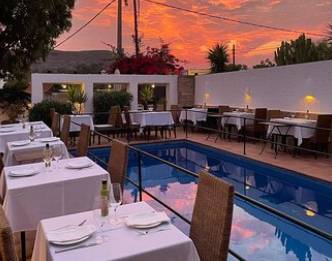
La Villa
Direction: Carretera Carboneras 18, 04149 Agua Amarga, España
Contact No: +34 722 55 27 31
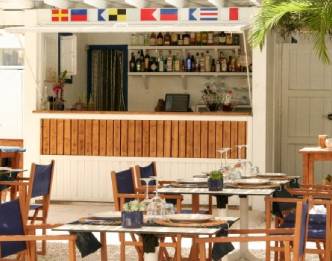
El Beach Agua Amarga
Direction: Calle Desaguee 20, 04149 Agua Amarga, España
Contact No: +34 670 28 28 63
Casual Dining
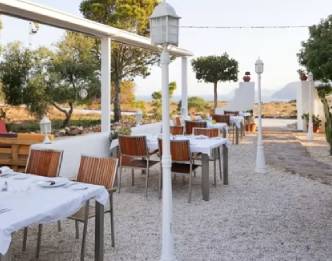
Asador La Chumbera
Direction: Carboneras, 04149 Agua Amarga, España
Contact No: +34 634 67 62 98
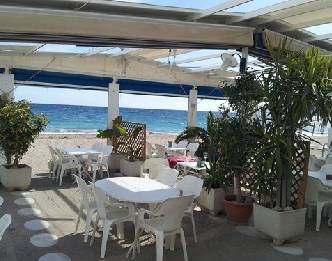
Restaurante Aguamarga 3
Direction: Calle Aljibe 19, 04149 Agua Amarga, España
Contact No: +34 687 82 23 28
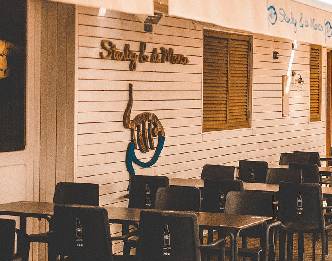
Stanley & de Marco Agua Amarga
Direction: Calle Ferrocarril Minero, 22, 04149 Agua Amarga, España
Contact No: +34 950 13 80 85
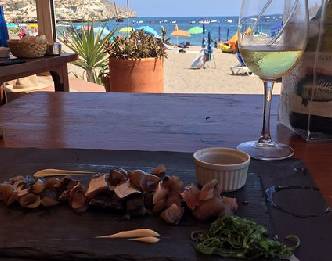
Los tarahis
Direction: Plaza, Agua Amarga, España
Contact No: +34 950 13 82 35
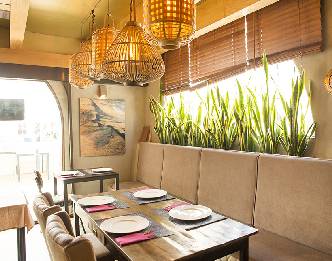
Restaurante Oleaje
Direction: Ferrocarril Minero 31, 04149 Agua Amarga, España
Contact No: +34 950 53 81 53
Bars & Lounges
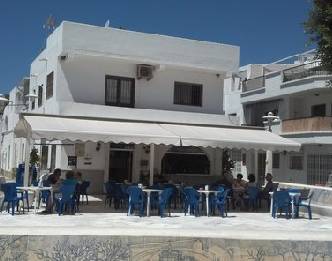
Bar La Plaza
Direction: Plaza, Agua Amarga, España
Contact No: +34 950 13 82 14